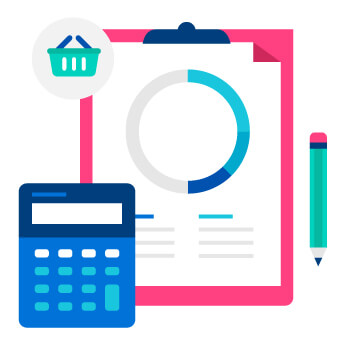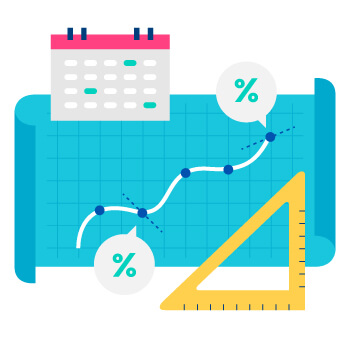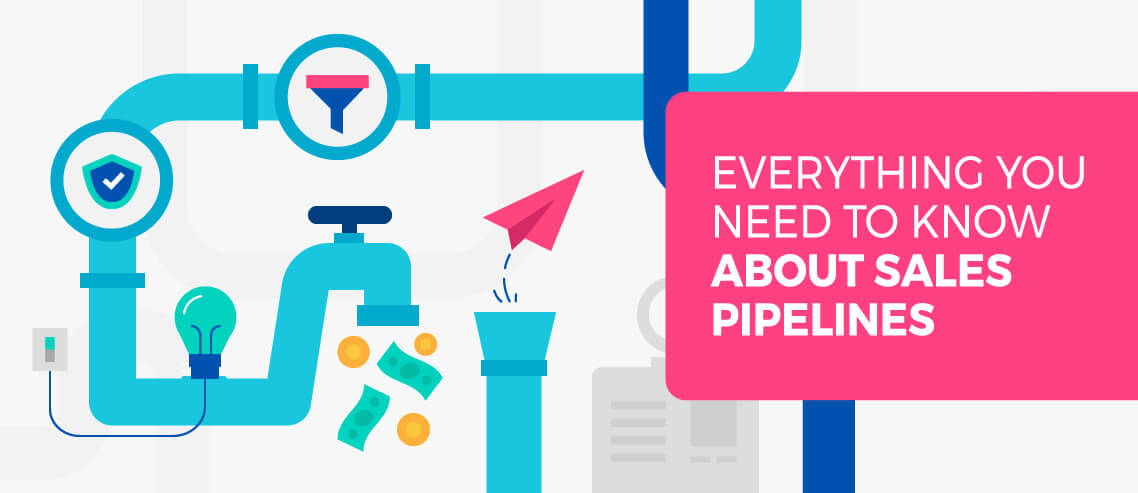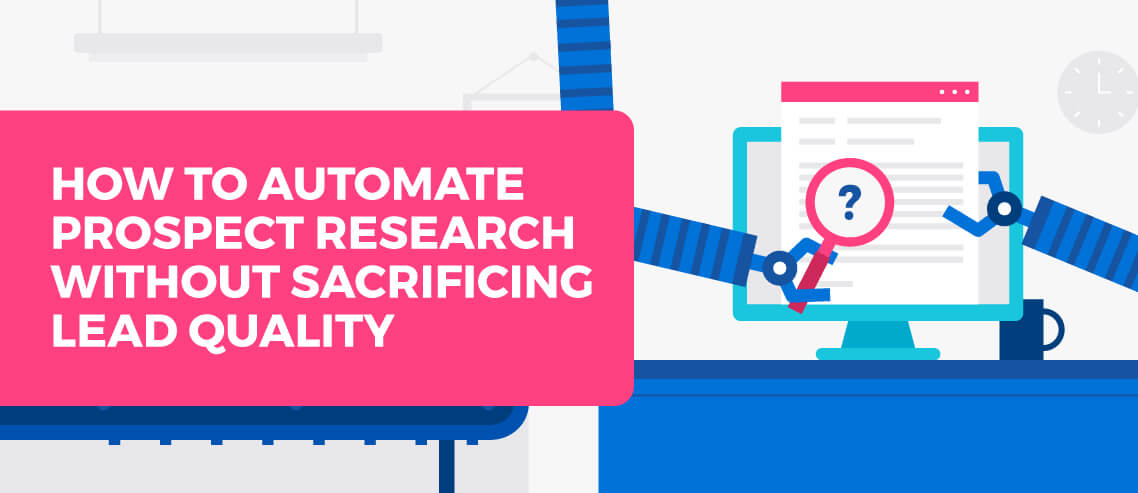Sales Velocity: What It Is and Why It’s Important

Contents
It’s no secret that every salesperson wants to sell more, faster.
Indeed, 69% of companies say their top marketing priority is to convert contacts and leads into customers.
But – as every salesperson knows – conversions take time. In fact, on average, it takes 84 days to close a lead.
That’s why sales velocity is such a vital metric for salespeople looking to speed up the rate at which they close deals. Focusing on sales velocity helps you identify where barriers to conversion crop up during the sales cycle, as well as identify efficiencies you’re benefiting from. It can also be helpful for organizations that need to project how much revenue they’ll generate over a given period.
But the main message here is this: improve your sales velocity, and not only will you sell faster, but you’ll also have time to close more deals. Cha ching.
What is Sales Velocity?
Sales velocity measures how quickly deals speed through the sales pipeline to generate revenue.
The sales velocity equation draws on four metrics:
- Number of opportunities
- Average deal value
- Win rate or conversion rate
- Length of sales cycle
Why is Sales Velocity So Important?
When looking at the bigger picture, measuring sales velocity regularly gives insight into the overall health of your business. It also measures the overall effectiveness of the sales team.
When an organization is struggling to rake in revenue, the sales velocity equation can help identify which individual components of the sales process are flawed, allowing you to improve them.
For example, say your number of opportunities, average deal value, and sales cycle length all look healthy, but your win rate is down. In that case, you know it’s time to look at the quality of your leads and perhaps how your sales team approaches them. You may even want to break down win rate by sales team member to see if there’s a weak link so that you can work out how to improve their closing game.
Or maybe your win rate is through the roof, and your number of opportunities and average deal value are looking good. But your sales cycle length is so long that – although they get there in the end – it’s taking sales reps forever to close. Now you know you need to review your sales cycle and work out what steps can be altered or eliminated for efficiency gains. Maybe it would benefit you to win a slightly lower proportion of deals on average, but to close them faster?
How to Calculate Your Sales Velocity

To accurately calculate your organization’s sales velocity, begin by separating small, mid-market, and enterprise pipelines (or whichever of the three your company targets).
It’s likely your metrics are pretty different within these market segments – particularly the average deal value and length of sales cycle. Enterprise-level prospects will likely be more valuable, but with more decision-makers involved, they’ll generally also take a lot longer to close. For an accurate view of your sales velocity, these need looking at separately.
Once you’ve divided your market segments, run a sales velocity equation for each one.
Sales velocity is calculated by multiplying the number of opportunities in a pipeline by the average deal value and win rate. The result must then be divided by the number of days in the typical sales cycle, as follows:
Sales Velocity = Number of Opportunities x Deal Value x Win Rate / Length of Sales Cycle in Days
The number you’ll be left with should roughly represent the amount of revenue you’re bringing in each day. You can then aim either to increase the deal value, or to decrease the length of the sales cycle – or, ideally, improve both.
That said, remember that a one-off calculation will rarely give you that much insight into the health of your business and sales team.
In order to really understand your performance, you must put these numbers into context. Calculate sales velocity at regular intervals to understand how changes you’ve made to your sales process have impacted it so that you can further adapt and improve.
Breaking Down the Factors Affecting Sales Velocity
1. Number of Opportunities

How many leads are the sales team able to work through over a specific period of time? To work out individuals’ productivity, you can also break this metric down by salesperson. Alternatively, break down the metric by region or product for a more granular perspective.
To boost sales velocity, push away the natural instinct that tells you the more leads you have the better. Instead, focus on sourcing higher-quality leads – even if this means you’re working with fewer total leads.
2. Deal Value
This one is simple. What’s the dollar value of the average sale? If your company works with a subscription-based product or in SaaS, swap this out for average customer lifetime value.
How can you alter your deal value to improve overall sales velocity? Offer deals or add-ons that will make your proposition more attractive to leads, while also increasing your average deal value – and, therefore, your sales velocity.
3. Win Rate
How many of your leads end up becoming customers that generate revenue for the business? If you get 100 leads in a month, and close 50 deals from this group, your win rate is 50%.
There’s no one single way to improve win rate: if there was, every salesperson would be smashing their targets week in, week out. But it’s always a good idea to focus on capturing and nurturing high-quality opportunities, such as prospects who have already demonstrated high intent to buy, or those who have been referred through existing contacts.
4. Length of Sales Cycle
This one is a little trickier. To work out sales velocity, you need to know how long your sales cycle takes on average. This will depend on a number of factors, including:
- How many steps your sales cycle contains
- How long each step takes on average
- How complex your offering is
- How much your products and services cost
Leads will spend a lot more time shopping around and researching a $10,000 deal than they will a $1,000 deal, lengthening the sales cycle in turn.
The sales cycle is a delicate ecosystem, with many moving parts – and it may not be consistent from deal to deal. But by carefully understanding what’s taking place, you should be able to identify opportunities to make efficiency improvements or revamp your sales playbook to shorten your average sales cycle. Adding headcount – where necessary – can also help to close more deals faster.
Best Practices for Measuring Your Sales Velocity

Still struggling to come up with solid metrics? Keep the following best practices in mind when attempting to understand sales velocity.
1. More is Better
The longer the length of time you analyze, the more data you’ll have to go off – and the more accurate the result will be.
Every sales team goes through peaks and troughs – often seasonal – so I wouldn’t recommend measuring less than a quarter. When you hit the end of the year, it’s often helpful to crunch the numbers from the whole year to give you an insight into annual performance.
If you undertake this kind of exercise every year, you’ll be able to compare and contrast with previous years to understand the impact changes you’ve made have had. Even better, you’ll be better prepared to launch into the new year with well thought out tactics that’ll boost your numbers over the next 12 months.
2. Consistency is Key
For an accurate reading, ensure your variables and definitions are consistent when calculating sales velocity. Any changes to the parameters of your metrics could skew the results, so while it might look like sales velocity has improved, it may have actually dropped. Or vice versa.
For example, when do you consider a lead to become qualified as an opportunity? At what point does your sales cycle start? What counts as a win? And how do you segment opportunities into small, mid-market, and enterprise pipelines?
Ensure you’re happy with these variables before you start measuring sales velocity. If any of them do change after the fact, make sure you allow for this change in your equation. Without the ability to accurately compare quarterly or yearly results, measuring sales velocity can be a pretty pointless exercise.
3. Understand the Impact of Discounting
Discounts are not always the answer to lagging sales. But they can have a significant impact when it comes to decreasing the length of your sales cycle, therefore positively affecting sales velocity.
Offer your prospects discounts – with a time limit – and if they’re going to close anyway, this will encourage them to close more quickly. Not only will this shorten the sales cycle, it could also bring some leads – who were considering going with a cheaper product or service from a competitor – back into the fold, increasing your win rate as well.
Consider offering a discount on a specific day of the sales cycle; either at the point where you’ve traditionally lost a lot of leads, or when you start to worry that the sales cycle is dragging on too long. However you structure your incentives, be sure you factor them into your sales velocity calculations in order to get the most out of this powerful metric.





